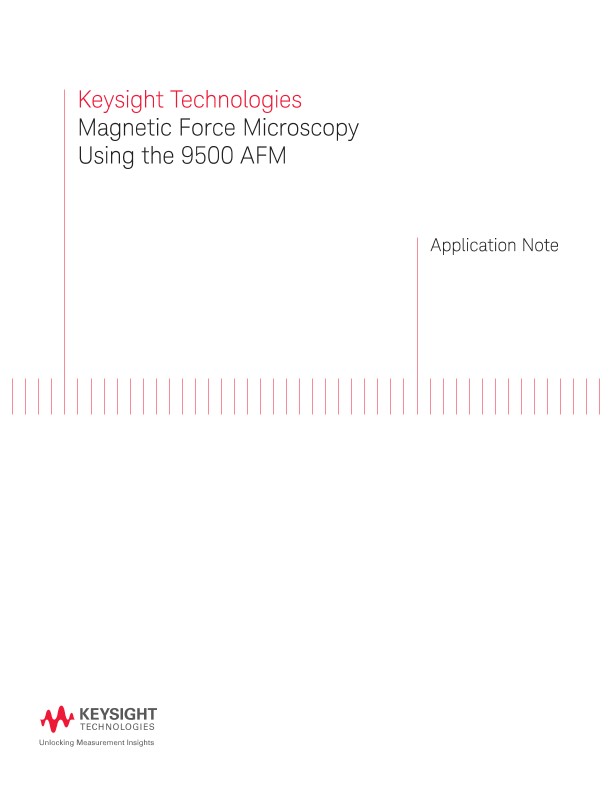Choose a country or area to see content specific to your location

应用文章
Magnetic force microcopy (MFM) is a mode derived from AFM for probing magnetic properties of materials, first introduced by Y. Martin and H. K. Wickramsinghe in 1987. It is based on the magneto-static interaction between a magnetic tip and the magnetic sample. The probe is usually a Si or Si3 N4 tip coated with a thin layer of magnetic film. The thickness of the coating is around 5 - 50 nm, and the material is usually a hard magnetic material with large coercively, such as CoCr, which will not change its magnetic state easily during imaging. The tip radii of the coated probe is typically 20 – 40 nm, which determines the physical limit of lateral magnetic imaging resolution.
MFM is simple to setup, easy to run, and a powerful tool to study submicron magnetic structures. MFM image reflects the interaction force between the magnetic probe and the stray field of the magnetic sample, which depends on the geometry and micromagnetic structure of the tip. Since the magnetic tip is often magnetized strongly along its vertical axis, it will be most sensitive to magnetic fields along the same axis, i.e., along the direction (z) normal to the sample surface. Under the simple assumption that the magnet of the tip can be seen as a monopole or a dipole moment located in the center of the tip end, the so called point probe approximation (PPA), MFM image will depends solely on the force gradient (∂F/∂z) along the z direction. Qualitative interpretation of the MFM image can be done based on this model.
×
请销售人员联系我。
*Indicates required field
感谢您!
A sales representative will contact you soon.